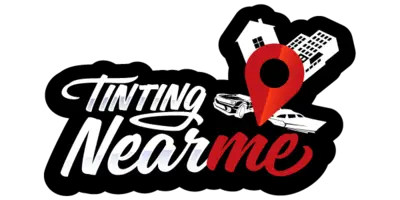2024 North Dakota Legal Tint Laws Explained
Isn’t it true that personalizing your vehicle can be an exciting endeavor, but it’s crucial you’re aware of the laws that govern these modifications? Specifically, in North Dakota, there are specific regulations for window tinting that are due for significant changes in 2024. You’ll need to understand these upcoming changes and how they impact your choices for customization, taking into account the new tint darkness regulations, reflective window tint laws, and other general rules. This is especially imperative if you want to avoid the penalties associated with non-compliance. Let’s explore what these updated laws entail and how they might affect you as a vehicle owner.
The information on myeyerx.net isn’t legal advice; consider it a starting point. Always verify with local and state authorities, as the final decision rests with you. We are not lawyers. For specific legal guidance, we can refer you to legal experts. Remember, knowledge of both state and local laws is essential, and even law enforcement might not be fully updated. We aim for accuracy but advise double-checking for the latest regulations.
Key Takeaways
Key Takeaways
Key Takeaways
- Sedan cars in North Dakota are required to have front side windows that allow more than 50% of light, while there are no specific restrictions for back side and rear windows.
- SUVs and vans in North Dakota also need front side windows that allow more than 50% of light, with no specific restrictions for back side and rear windows.
- Tint reflection laws in North Dakota prohibit metallic or mirrored appearances and require tint reflection to allow more than 70% of light in for sedans, SUVs, and vans.
- General tinting rules and regulations in North Dakota mandate a minimum Visible Light Transmission (VLT) of 70% for windshield and front side windows in sedans and SUVs/vans, with the option to tint back side and rear windows darker.
Need Help Getting a Medical Exemption?
Our Doctors Are Here For You!
MyEyeRx was established with the objective of simplifying the complex landscape of state regulations pertaining to legal tint medical exemptions for window tinting. For individuals seeking to navigate these regulations without resorting to a do-it-yourself approach, we offer a streamlined solution. Our team includes qualified medical professionals who are available to conduct consultations via Zoom. These sessions are designed to assess your eligibility for a medical exemption, ensuring a personalized and efficient process for acquiring the necessary documentation.
North Dakota Tint Darkness Regulations
In understanding North Dakota’s tint darkness regulations, it’s crucial to note that the Visible Light Transmission (VLT) determines the percentage of light allowed through your car windows, with regulations varying between sedan cars and SUVs/vans. These North Dakota tint laws are designed to ensure your safety while keeping in mind the aesthetic appeal of a tinted vehicle.
The North Dakota window tinting rules for sedan cars are specific. Front side windows must allow more than 50% of light in, while the windshield may only have non-reflective tint above the manufacturer’s AS-1 line. Interestingly, there are no specific restrictions for the back side and rear windows, giving you some flexibility in choosing your tint darkness.
The window tint laws for SUVs and vans in North Dakota also have distinct specifics. Much like sedans, SUVs and vans must have front side windows that allow more than 50% of light in and only non-reflective tint above the AS-1 line on the windshield. However, back side and rear windows aren’t under specific restrictions, allowing you to select tint darkness at your discretion.
North Dakota laws further stipulate that metallic or mirrored appearances are not allowed on front and back side windows for both sedan cars and SUVs/vans. This is a critical point to remember when you’re considering the tint on your vehicle.
Understanding these rules and regulations is essential to ensure your vehicle is compliant with the regulations in North Dakota. Adherence to these window tinting laws not only keeps you on the right side of North Dakota laws but also contributes to safer roads for everyone.
Tint Reflection Laws in North Dakota
Shifting gears from darkness regulations, let’s now explore the laws governing tint reflection in North Dakota, which play a crucial role in maintaining safe and legal vehicle aesthetics. As part of the 2024 North Dakota legal tint laws explained, it is important to understand the role of Visible Light Transmission (VLT) in the reflection of tints.
North Dakota tinting laws permit a certain degree of reflection in vehicle window tints; however, a metallic or mirrored appearance is not allowed. To help you navigate these regulations, here is a brief table outlining the tint reflection laws in North Dakota:
Vehicle Type | Reflection Laws |
Sedan | Tint reflection must allow more than 70% of light in. |
SUV/Van | Tint reflection for SUV must also allow more than 70% of light. |
Dark Tint | Not allowed on windshields and front side windows. |
Light Tint | Allowed on all windows, must meet VLT requirements. |
Dual Side Mirrors | Required if any window behind the driver is tinted. |
For both sedans and SUVs, the tint is allowed on side windows but must allow more than 70% of light in, ensuring the safety of North Dakotas drivers. When considering window tint in North Dakota, remember that dual side mirrors are required if any window behind the driver is tinted. This critical detail is often overlooked but is required in North Dakota to maintain safe driving conditions.
General Tinting Rules and Regulations
Delving into the general tinting rules and regulations, you’ll find that North Dakota’s laws revolve around Visible Light Transmission (VLT) measurements, specific requirements for different vehicle types, and strict prohibitions against certain tint appearances.
The VLT measurement, expressed in percentage, denotes the amount of visible light that a tint allows to pass through a window. In North Dakota, these percentages vary depending on the type of vehicle. For sedans, the VLT must be at least 70% for the windshield and front side windows, while it can be as low as 88% for the back side and rear windows. If your motor vehicle is equipped as an SUV or van, the same rules apply for the windshield and front side windows, but the back side and rear windows can be tinted darker.
Tinting rules also dictate the reflectivity of your tint. While a certain level of light reflection is allowed, North Dakota law strictly prohibits any metallic or mirrored tint appearances on the front and back side windows.
Moreover, North Dakota law requires that if any window behind the driver is tinted, the vehicle must have dual side mirrors. This ensures safe visibility, helping to prevent accidents. Additionally, while some states permit medical exemptions for darker window tints, North Dakota has no such provision.
While North Dakota’s tint laws may seem complex, understanding them is crucial to ensure your vehicle’s compliance. Keep in mind, it’s not just about the aesthetics, it’s about safety, visibility, and abiding by the law.
Medical Exemptions and Color Restrictions
You might find it interesting that North Dakota no longer allows medical exemptions for window tint – a departure from some other states’ allowances. This means that regardless of your medical condition or needs, you cannot legally have your car windows tinted with zero light transmittance. This rule is strictly enforced by the Dakota Highway Patrol and local law enforcement agencies.
There are also no specific tint colors restricted in North Dakota. Unlike certain states that have stringent regulations about window tint colors, North Dakota offers more flexibility. However, this does not mean you can use any tint color that comes to mind. Remember, while the state’s laws do not specifically restrict certain colors, other rules regarding light transmittance still apply.
When it comes to factory tinting on windows, North Dakota follows the same laws as for aftermarket tinting. The light transmittance should not be less than the legal limit prescribed under the state’s laws.
Since tint regulations can sometimes vary from one county to another, it’s crucial to verify this information with your local DMV or law enforcement authorities. This will ensure that you’re fully compliant with the laws and rules of your particular region, avoiding any potential legal issues down the line.
Penalties for Non-Compliance
While understanding and adhering to North Dakota’s tint laws is critical, it’s equally important to be aware of the penalties that come with non-compliance. If you choose to darken your vehicle’s windows beyond the legal percentage of tint, you’re not only impairing your visibility and potentially jeopardizing your safety, but you’re also inviting legal trouble.
If you’re found to be in violation of the law, you can expect to receive a notice to correct the tinting. This means you’d be responsible for bringing your vehicle up to code, which could involve the complete removal and replacement of your tinted windows. This could prove to be a costly inconvenience, so it’s best to ensure you’re in compliance from the get-go.
The penalties for non-compliance escalate with each offense. A second offense might result in a higher fine, while by the third offense, you could find yourself facing not only a hefty fine but potential court appearances as well. Moreover, persistent violations could even lead to the suspension of your driving privileges.
Tinted Side Mirrors and other light transmitting surfaces beyond the legal limit are equally scrutinized, so it’s essential to ensure all aspects of your vehicle conform to the law.
To steer clear of trouble, it’s advisable to verify the current window tinting laws with your local DMV or law enforcement. Remember, staying informed and abiding by the law keeps you, and those around you, safe while behind the wheel. So, make the smart choice and ensure your vehicle is up to code.

Don't want the hassle? Let us take care of your exemption for you!
MyEyeRx.net is here to help you streamlines the process of obtaining a medical exemption for window tint online. Explore our services to easily transform your window tint from non-compliant to legally approved!
Because of the differences in each of the 50 states, we’ve crafted distinct guides for securing window tint medical exemptions for each of the individual states.

Toriano (Tory) Dewberry
Become one of the many satisfied clients Toriano has assisted in obtaining a medical exemption without stepping out of their homes. Click the button below to begin and discover if you're eligible for a medical exemption.

Toriano (Tory) Dewberry
Become one of the many satisfied clients Toriano has assisted in obtaining a medical exemption without stepping out of their homes. Click the button below to begin and discover if you're eligible for a medical exemption.
Frequently Asked Questions (FAQ'S)
What Is the Darkest Legal Tint in North Dakota?
In North Dakota, you’re allowed any tint darkness on your vehicle’s rear and back side windows. However, tint regulations mandate over 70% light visibility through your windshield and front side windows, addressing visibility concerns for law enforcement and safety measures. Tint durability, application process, and varieties can vary. Check the warranty info and understand tint benefits and potential legal penalties before making your choice.
What’s Darker 35 or 50 Tint?
When comparing tint levels, 35% tint is actually darker than 50%. It’s a bit counterintuitive, isn’t it? The lower the percentage, the less light it lets through, making the tint darker. It’s crucial to consider this when choosing your tint material and installation, as it impacts visibility and durability. Remember, though, safety concerns and regulations must also factor into your decision, so always check local laws before opting for a darker tint.
What Does 70 Tint Look Like?
A 70% tint is quite light, providing a clear view from both inside and outside your car. It’s not really about privacy, but more about reducing glare and blocking UV rays. You’ll notice a slight darkening, enhancing your vehicle’s aesthetics without drastically changing its appearance. It’s relatively easy to install and maintain, but remember, it’s not as durable as darker tints. It’s a cost-effective option if you’re mainly after UV protection and glare reduction.
What Is the Darkest Tint Allowed?
In North Dakota, you’re allowed to go as dark as 50% light transmission on your front side windows. But beware, mirrored or metallic finishes are a no-no. If you’re all about privacy, there’s good news – your back side and rear windows can be as dark as you like. But remember, if you tint any window behind the driver, you’re going to need dual side mirrors. Don’t forget, breaking these rules could cost you $20 per offense.

MyeyeRx.net
Ensuring your tint is not just about style, but legality and safety.
Let us guide you through the maze of state regulations to legal clarity.

Conclusion
In navigating North Dakota’s tint laws, it’s clear as a bell that compliance is key. With no restrictions on tint darkness for rear windows, but strict rules against reflective front and back side windows, it’s a fine line to tread. Remember, dual side mirrors are mandatory if the rear window is tinted and medical exemptions are a thing of the past. Failure to follow the rules can lead to penalties, so stay informed and stay on the right side of the law.
Looking to find a Reputable Window Tint Company In North Dakota?
Checkout Tintingnearme.com to Find A Local Tint Shop
After learning about window tint laws, the next step is to find a trusted local window tinting shop. Tinting Near Me offers a selection of reputable shops knowledgeable in both quality tinting and legal standards, including medical exemptions.
Choose a shop from their list for expert service that meets legal requirements and enhances your vehicle’s compliance and protection.


